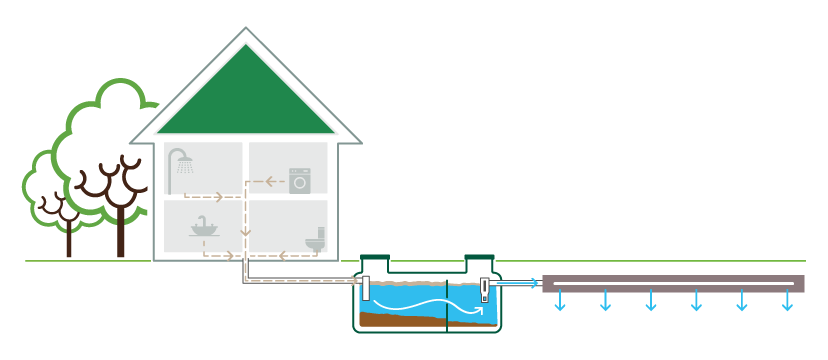Understanding Your Septic System

Before we dive into the tips and tricks of effectively using your septic system, it’s crucial to understand how it works.
➤ A septic system is an underground wastewater treatment system that is commonly used in areas where there is no access to a centralized sewer system. It consists of a septic tank and a drainfield, also known as a leach field.
➤ The septic tank collects all the wastewater from your household, including toilets, showers, sinks, and laundry, and allows solids to settle at the bottom while the liquid portion, known as effluent, flows out into the drainfield for further treatment by the soil.
Regular Pumping and Maintenance
One of the key factors in ensuring the efficient and long-lasting operation of your septic system is regular pumping and maintenance. Septic tanks need to be pumped out periodically to remove accumulated solids and prevent them from reaching the drainfield. The frequency of pumping depends on various factors such as the size of the tank, the number of occupants in the household, and the amount of water used. As a general rule of thumb, it’s recommended to pump your septic tank every 3-5 years.
In addition to pumping, regular maintenance of your septic system is essential. This includes inspecting the tank and drainfield for any signs of damage, leaks, or clogs. It’s also crucial to avoid flushing or pouring down the drain any harmful substances such as grease, oil, chemicals, medication, or non-biodegradable items that can disrupt the natural biological processes in the tank and cause damage to the drainfield. Proper maintenance not only prevents costly repairs but also helps in maximizing the lifespan and efficiency of your septic system.
Water Conservation and Proper Usage
Conserving water and using it wisely is not only good for the environment but also crucial for the effective operation of your septic system. Excessive water usage can overwhelm your septic tank and drainfield, leading to backups, flooding, and system failure. To prevent this, it’s important to fix any leaks or drips in your household plumbing, install water-saving fixtures such as low-flow toilets and faucets, and avoid excessive water usage, especially during peak times.
In addition to water conservation, proper usage of your septic system is equally important. Avoid flushing or pouring down the drain anything other than human waste and toilet paper. Avoid using the toilet as a trash can and dispose of non-biodegradable items properly. It’s also important to be mindful of the types of cleaning products you use in your household as harsh chemicals can disrupt the natural balance of bacteria in your septic tank. Opt for septic-safe or biodegradable cleaning products to prevent damage to your septic system.
Proper Landscaping and Drainfield Protection
The drainfield is a critical component of your septic system as it helps in the final treatment of effluent by allowing it to percolate through the soil and be naturally filtered. Therefore, it’s important to protect your drainfield and ensure its proper functioning. One of the key aspects of drainfield protection is proper landscaping. Avoid planting trees or shrubs with extensive root systems near your drainfield as they can infiltrate and clog the drain